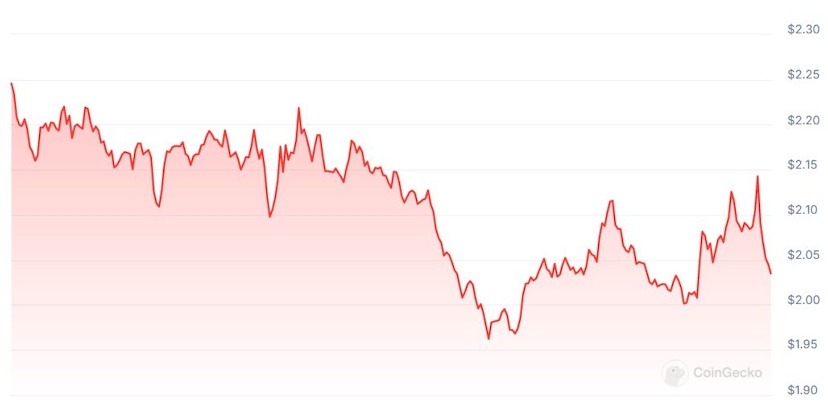CoreDAO Brings Native Staking To Bitcoin
The Bitcoin-powered EVM-compatible blockchain enables non-custodial native Bitcoin staking, with rewards paid out in CORE tokens.
By: Pedro Solimano • Loading...
DeFi
Bitcoin holders can finally put their idle coins to work.
CoreDAO’s novel Core Chain, which combines Delegated Proof of Stake (DPoS) and Delegated Proof of Work (DPoW), lets users earn yield on their Bitcoin without ever having to leave the network.
This marks a potential inflection point for Bitcoiners and the oldest cryptocurrency in the industry.
Core aims to unlock the trillion dollars of trapped Bitcoin liquidity. Bitcoin holders want more utility, which requires separating the Bitcoin asset from the Bitcoin rails while being symbiotic with Bitcoin L1, said Rich Rines, a Core contributor.
Previously, Bitcoin investors who wanted to earn passive income needed to wrap their BTC on other chains, such as Ethereum. Now, with this allegedly “first in kind” non-custodial staking, Bitcoiners are able to reap rewards natively.
Core Chain launched its mainnet and airdropped its native CORE token in early 2023. The token trades for $2.05 after an 8% drop today. It’s had a successful month, however, rising 252% to a $1.8 billion market cap.

How Core Works
Despite its short lifespan, the project showcases solid numbers.
According to its website, approximately 50% of Bitcoin’s hashrate is participating in the system, with 5 million active wallets and more than 258 million on-chain transactions.
CJ Reim, a Core contributor, told The Defiant that mining pools decide to delegate their BTC hashpower to the network and receive CORE tokens in exchange, becoming validators in the process.
For the network to function, Core works with Bitcoin miners to recycle hash for transactions, thus securing the chain and dishing out rewards for holders and pools. It also makes use of Bitcoin’s time lock function, wherein BTC gets locked in for a specific amount of time.
While the Bitcoin is time-locked, miners then delegate blocks to Core in exchange for the tokens.
There are 28 validators, and they include OKXEarn, DAO Mining pool, and Bitget.
Additionally, users can earn a 25% yield on stCORE, a liquid staking token that lets CORE holders earn rewards without locking in their assets.
stCORE token holders participate in Core Chain’s delegated proof of staked consensus mechanism by default, and the reward rate is the projected annualized return on holding the stCORE.
Bitcoin ETP
Core Chain’s novel mechanism has also garnered the attention of institutions.
On April 17, DeFi Technologies and its subsidiary Valour Asset Management launched their own exchange-traded product (ETP), which offers investors exposure to Bitcoin-native yield through a collaboration with CoreDAO.
According to a press release, Valour Inc. will manage a validator node on the Core Blockchain, enhancing network security and efficiency while planning to stake $100 million in BTC.
“The Yield Bearing BTC ETP introduces a new era for Bitcoin as an actively yielding investment, utilizing Core Chain's block rewards and expanding Bitcoin's utility without leaving the network,” the firm said.
New Era For Bitcoin
The once-barren Bitcoin ecosystem is radically changing.
Up until a year ago, the network was mostly known – and used – for its store of value narrative, leaving investors needing to use other networks for further financial use cases.
But thanks to the arrival of Ordinals, and now through novel experiments like Core Chain, the world’s oldest blockchain continues to evolve.
Advertisement
Get the best of The Defiant directly in your inbox 💌
Know what matters in Web3 with The Defiant Daily newsletter, every weekday
90k+ investors informed every day. Unsubscribe anytime.